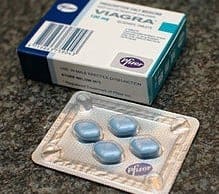It’s not the little blue pill famous for helping men get big results, but for those who need it, the outcome might be even more significant.
A new research report published online in The FASEB Journal, offers hope to men who experience priapism. This condition, which is often seen in men with sickle cell disease, causes erections lasting so long that they cause permanent damage to the penis. Specifically, a compound, called “C6′” offered mice — with and without sickle cell disease — relief by normalizing nitric oxide levels in penile blood. In addition to helping men with priapism, this action of this compound also provides insight for future research related to vascular and circulatory disorders such as hypertension.
“This study has implications for quality of life by suggesting the possible role of a drug therapy for controlled, physiologic release of nitric oxide that may treat conditions of altered nitric oxide signaling or function,” said Gwen Lagoda, M.S., a researcher involved in the work from the Department of Urology at Johns Hopkins Medical Institutions, in Baltimore, Maryland. “Its application may extend beyond erection disorders and include other health conditions involving abnormal circulation and blood flow.”
Scientists analyzed two groups of experimental mice. The first group had both endothelial and neuronal nitric oxide synthase knocked out. The second group of mice had sickle cell disease. In both groups of mice, nitric oxide signaling was known to be abnormal and resulted in abnormal erections. When these mice were given C6′ treatment, their molecular abnormalities were reduced and erectile functioning returned to levels similar to normal mice.
“Thanks to massive advertising, when people think of ‘E.D.,’ they often think of an inability to achieve or maintain an erection,” said Gerald Weissmann, M.D., Editor-in-Chief of The FASEB Journal. “What they don’t realize is that there can be other problems as well. Priapism is a dangerous and painful form of erectile dysfunction that is overlooked. Hopefully this compound will be just as effective in people as it was in mice.”


